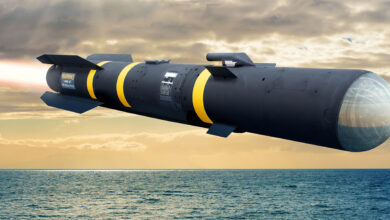A US Marine Corps AH-1Z Viper helicopter fired a Lockheed Martin joint air-to-ground missile (JAGM) at land targets recently as part of the weapon’s continuous evaluation.
Eight shots were fired at armored and semi-armored vehicles in various scenarios, the service revealed.
The data collected from the exercise will be analyzed to refine the missile’s employability “in expeditionary advanced base operations, such as strike operations and close air support.”
In a December test, the Bell aircraft struck maritime targets with the missile as part of a larger upgrade plan. The US Navy recently awarded Northrop Grumman a $24.3 million contract to provide the aircraft with additional sensor networking, enabling it to exchange tactical “text, imagery, and digital voice messages” in near real-time through Link 16 data link kits.

Joint Air-to-Ground Missile
The JAGM is the intended replacement for “Hellfire II and Longbow Hellfire missiles on the US Army’s Apache helicopter and the Warrior extended-range multi-purpose [unmanned aerial system], the Arapaho armed reconnaissance helicopter,” according to Lockheed.
“JAGM will also replace the Maverick missile on the F/A-18 Hornet jet fighter.”
Features
The missile’s lethality comes from its multi-purpose warhead, which consists of a “precursor warhead” that first penetrates armored targets such as ships, vehicles, bunkers, and buildings. Then, the time-delayed main warhead detonates “to incapacitate the target from within.”
The missile features a multi-mode seeker with a semi-active laser for precision strikes and millimeter-wave radar for “active fire-and-forget capability during the day, night, adverse weather and battlefield obscurants.”
The weapon’s “insensitive-munition rocket motor” also allows continuous propulsion, even in extreme temperatures.










